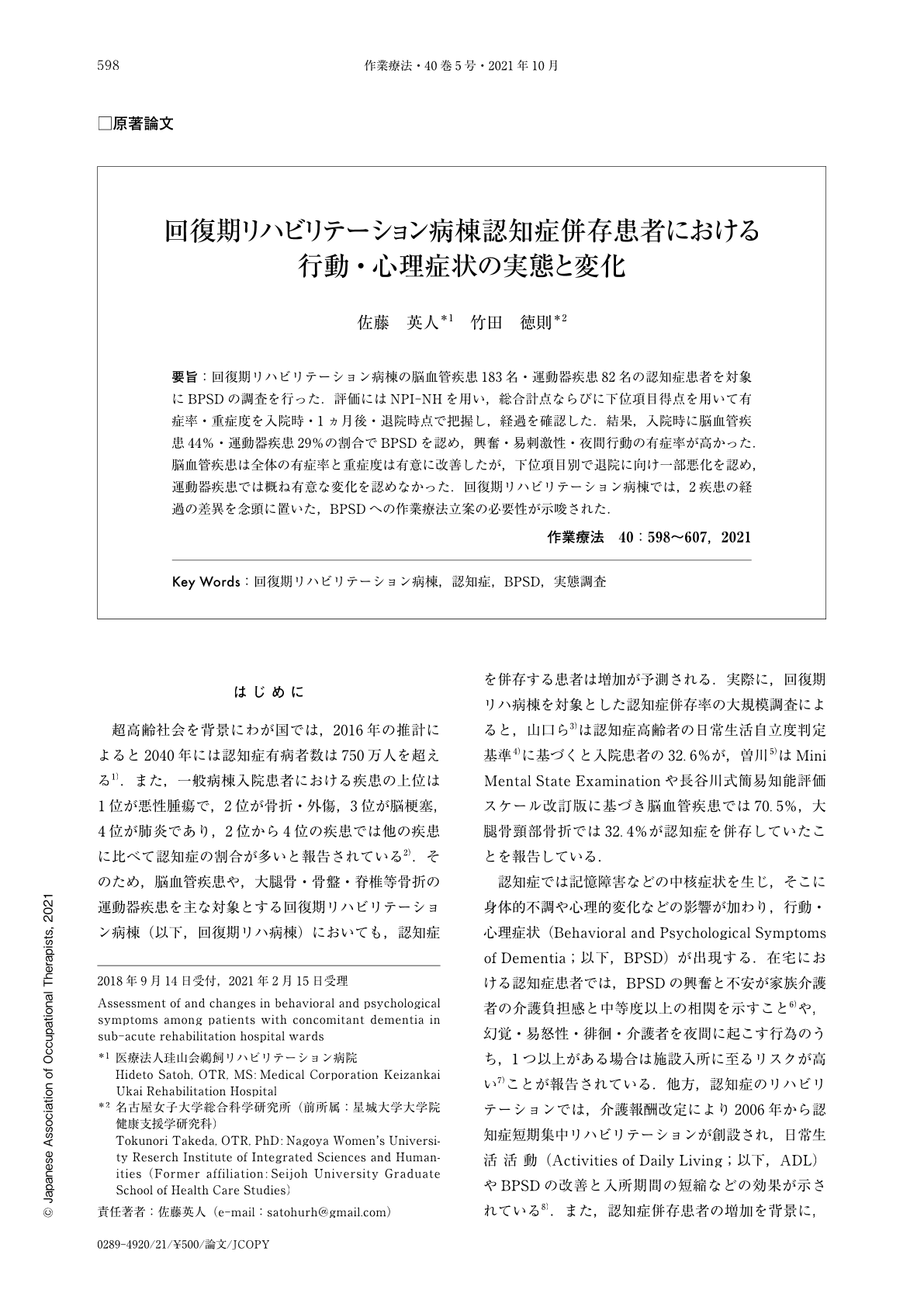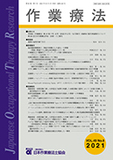Japanese
English
- 販売していません
- Abstract 文献概要
- 1ページ目 Look Inside
- 参考文献 Reference
- サイト内被引用 Cited by
要旨:回復期リハビリテーション病棟の脳血管疾患183名・運動器疾患82名の認知症患者を対象にBPSDの調査を行った.評価にはNPI-NHを用い,総合計点ならびに下位項目得点を用いて有症率・重症度を入院時・1ヵ月後・退院時点で把握し,経過を確認した.結果,入院時に脳血管疾患44%・運動器疾患29%の割合でBPSDを認め,興奮・易刺激性・夜間行動の有症率が高かった.脳血管疾患は全体の有症率と重症度は有意に改善したが,下位項目別で退院に向け一部悪化を認め,運動器疾患では概ね有意な変化を認めなかった.回復期リハビリテーション病棟では,2疾患の経過の差異を念頭に置いた,BPSDへの作業療法立案の必要性が示唆された.
The Behavioral and Psychological Symptoms of Dementia (BPSD) survey was administered to 183 patients with cerebrovascular diseases (CVA) and 82 patients with motor system disorders in sub-acute rehabilitation wards. The Neuropsychiatric Inventory-Nursing Home version (NPI-NH) was used for evaluation, and the total score and incidence rates and severity for each subscale were assessed at the time of hospital admission, one month after admission, and at the time of discharge to determine changes over time. At the time of hospital admission, BPSD was found in 44% of patients with CVA and 29% of patients with motor system disorders, and there were heightened incidence rates of agitation, irritability, and night-time behavior. Among CVA patients, both improvement and deterioration were seen in subscales heading towards hospital discharge. Overall incidence rates and severity improved significantly among CVA patients but did not change significantly in patients with motor system disorders. These findings indicate that there is a need to devise occupational therapy treatment plans for BPSD in sub-acute rehabilitation wards that account for differences in temporal changes in patients with these two types of disorders.

Copyright © 2021, Japanese Association of Occupational Therapists. All rights reserved.


